I flew economy on American, Delta, and United. The flights were strikingly similar but with small quirks that may help you choose which airline to fly.
I recently flew in domestic economy on American Airlines, Delta Air Lines, and United Airlines.
Each has pros and cons, but are all competitive. I'll continue to book based on price and convenience.
Differences in comfort and service among the airlines may influence other travelers' choices.
The US has three "Big 3" mainline carriers: American Airlines, Delta Air Lines, and United Airlines.
Frequent flyers commonly have a favorite, whether for the fares, on-time rate, route options, or the airline's loyalty program.
I have historically favored Delta because it's what my family always flew growing up. But these days, I usually book based on price and convenience rather than loyalty. (If you're looking for the best airline for free upgrades or point redemptions, this isn't the article for you).
As someone whose job often involves flying on airlines and comparing them, I recently pit the Big 3 against each other by flying each on the same ticket type, on similar routes, and all within a reasonable timeframe.
What I found won't change how I approach booking flights because the experiences on each airline were similar enough overall, but I can imagine the small comfort and service differences could sway other travelers.
My three domestic tickets were for basic economy on flights of about four hours, giving me the most apples-to-apples comparison.
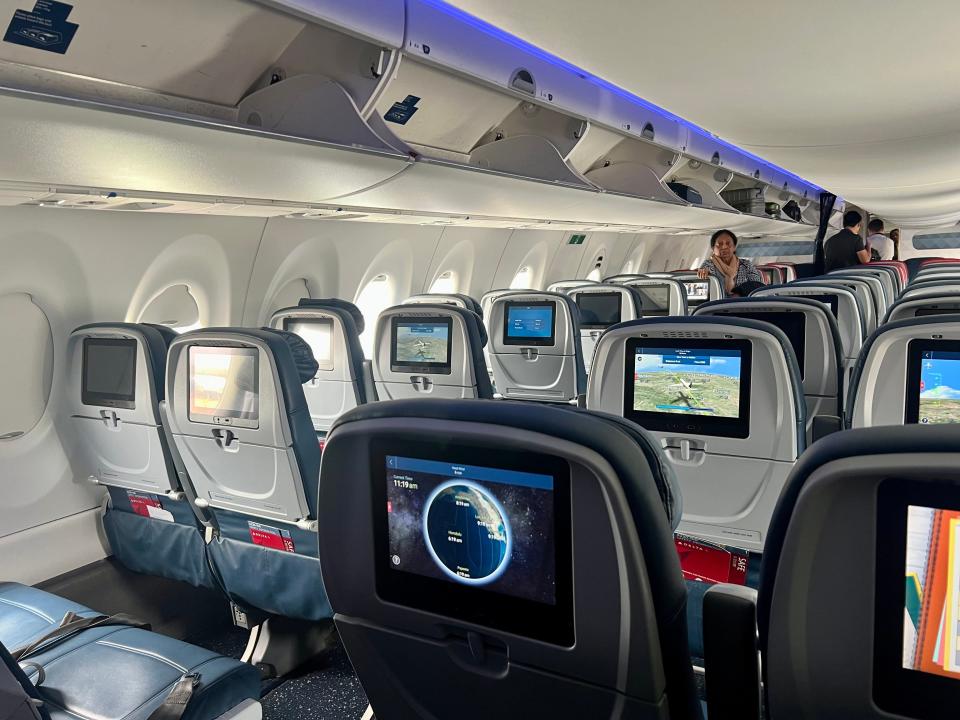
In mid-May, I flew on a Delta A220 from New York's LaGuardia Airport to Dallas/Fort Worth International Airport and returned on an American Boeing 737-800.
My United Boeing 737 Max 8 flight was from LaGuardia to Denver International Airport in early July.
I book basic economy because I like to save money where I can, and the unbundled fares are perfect for my style of travel.
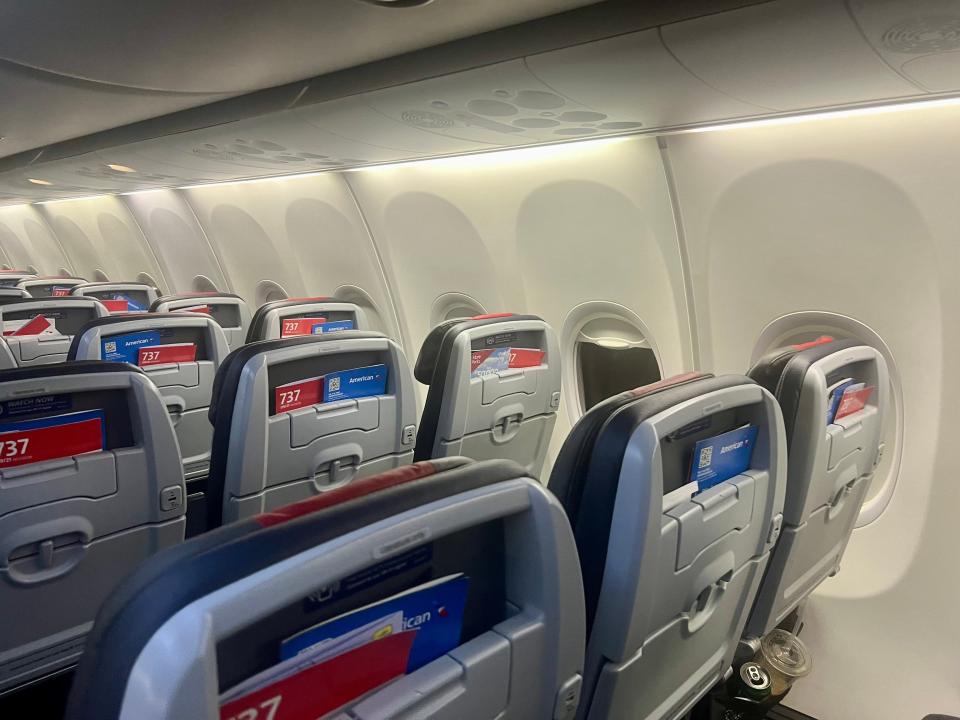
I'm a low-maintenance budget traveler who usually only has a carry-on. I mostly don't like checking luggage because I'm impatient and don't want to wait for it at bag claim.
There's also the risk that my bag won't reach my final destination, but I mostly trust the airlines — and I have an AirTag for backup.
However, if you're worried, Department of Transportation data says American and United had the worst mishandled luggage rates in 2023, with 0.76 and 0.73 bags mishandled per 100 bags enplaned, respectively. Delta was the best-performing of the three, with a rate of 0.47.
In all cases, the ticket can be upgraded to regular coach for things like an assigned seat and no change fees. I'd recommend paying up if you want a little more control over your reservation.
Out of the three discount options, American and Delta often offer more bang for your buck than United's more restrictive basic fares.
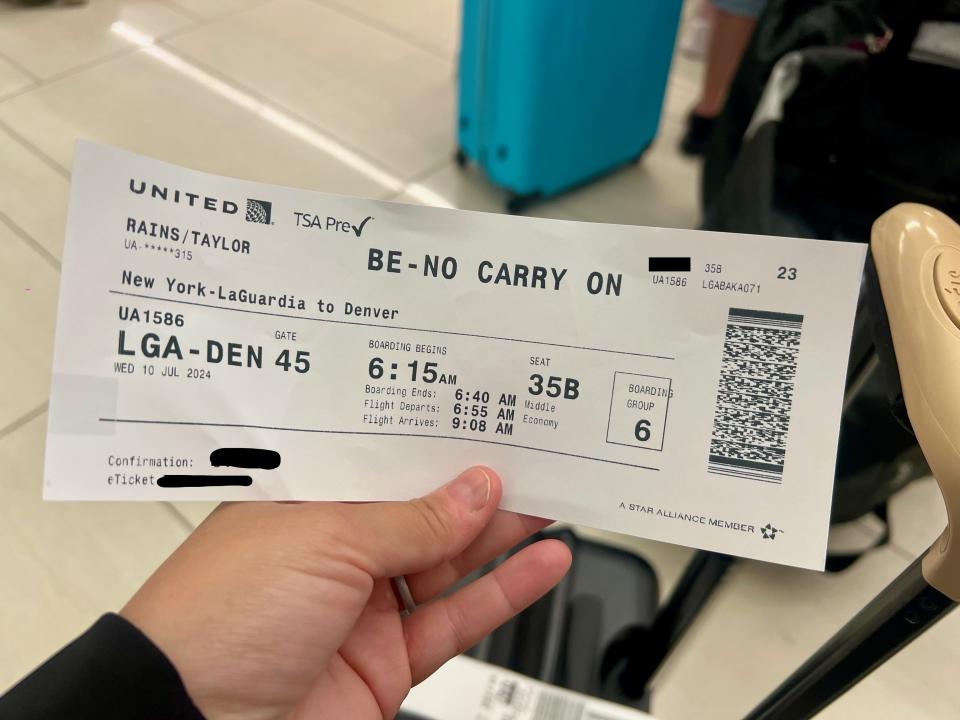
The point of basic economy is to lure in price-sensitive travelers (like me) with a fare that only requires you to pay for what you need. It's basically the low-cost model but with the perks of mainline cabins, like inflight entertainment, free snacks, and reclining seats.
Unlike American and Delta, United made its offer as barebones as possible by not allowing carry-on bags at all.
Except for most international routes, anything more than a personal item on United has to be checked. Delta and American allow a carry-on and a personal item for free.
Meanwhile, the seat rule is the same across the board — you pay extra to reserve one. Otherwise, you'll get a random seat at check-in — and I ended up with a middle seat on every flight.
United's policy required me to spend an extra $40 to check my carry-on, which isn't ideal and could be a dealbreaker if a competitor is cheaper.
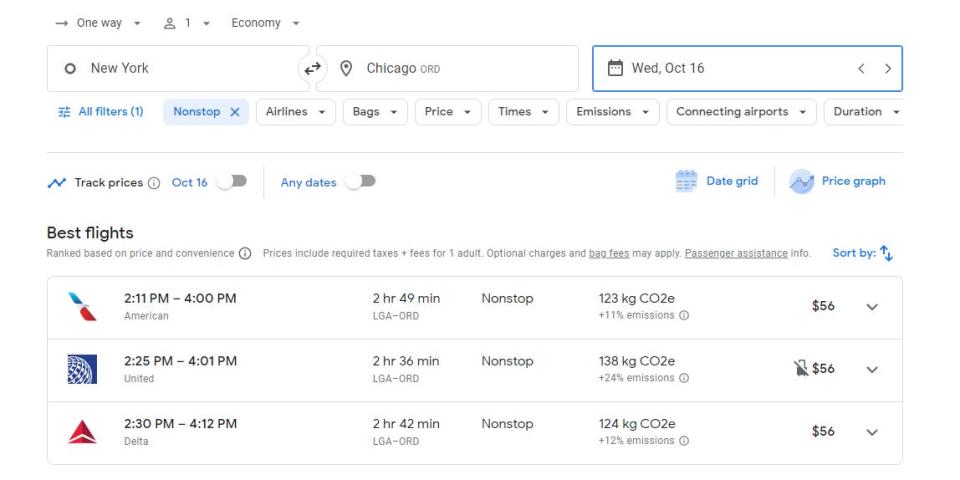
For example, a one-way basic economy flight from LaGuardia to Chicago in mid-October is $56 on American, Delta, and United, according to Google Flights. Other dates show similarly close fares.
After the added fee and hassle of checking a bag on United, I'd book one of the other two by probably flipping a coin since I simply don't care about status.
While the no carry-on bothered me, it's not a problem for everyone. United earns points for its more tech-savvy cabin.
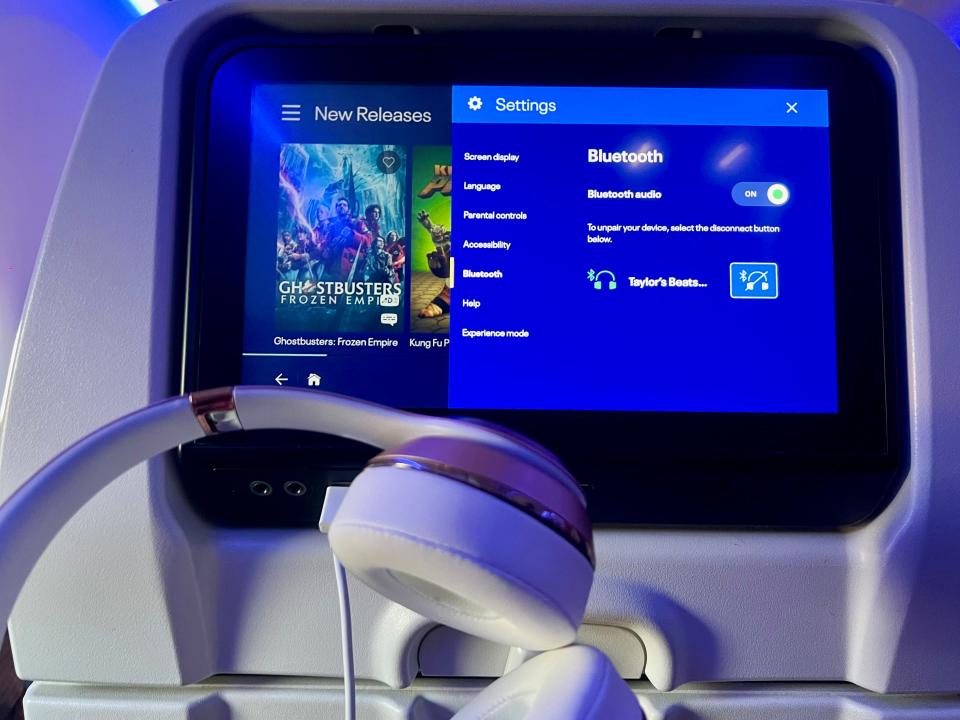
The United plane I flew on was retrofitted with the airline's enhanced "United Next" cabin that it unveiled in 2021.
It offers the regular bells and whistles you'll find on most American and Delta narrowbodies, but you can also connect Bluetooth headphones to the seatback screens.
It was a much better option than using regular earbuds, especially if you're stuck with the scratchy airline-provided ones.
You'll get a similar cabin layout on Delta, but without Bluetooth, unless you're in first class on an A321neo.
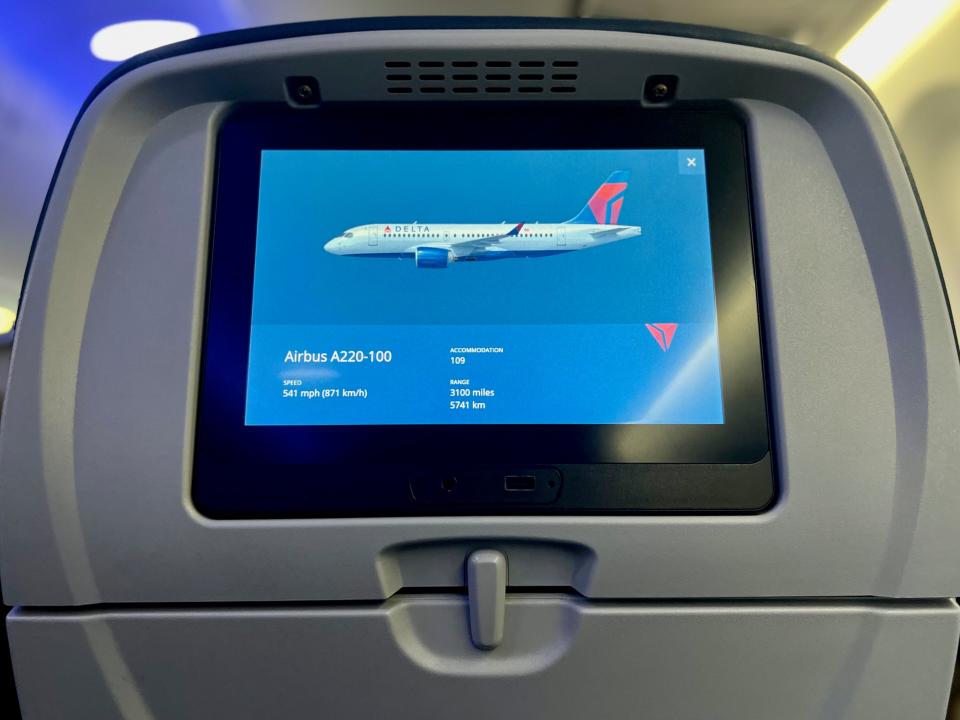
Delta's Bluetooth is not available in coach. United is the only US airline to offer it cabin-wide, fitting Bluetooth on some 100 planes.
The airline expects to roll it out on 800 aircraft by 2032.
American has installed seatback tablet holders instead of screens. It makes me an oddball, but I actually prefer it that way.
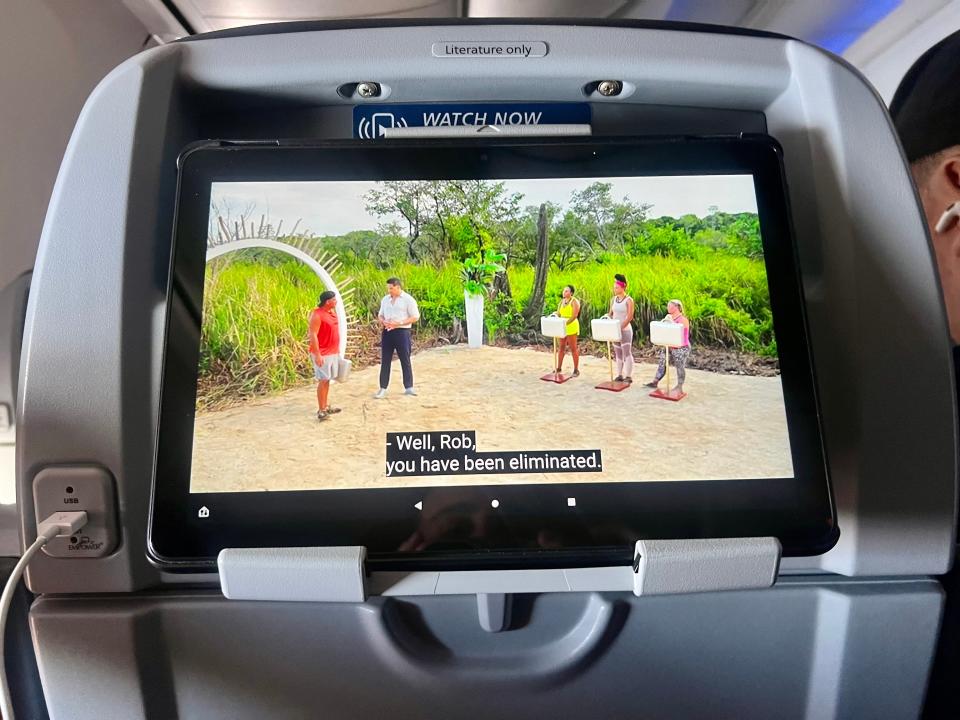
I am addicted to competitive reality television shows like Big Brother and Survivor, and they're my go-to on flights. The tablet holder was perfect for my taste, but I doubt I'm the popular opinion.
If you rely on seatback content, Delta and United may be your better bets.
However, according to American's website, some of its single-aisle planes, including some A319s and the transcontinental A321T, have screens.
In my experience, besides the screen difference, the Big 3 largely offer the same level of comfort and service in their narrowbody cabins.
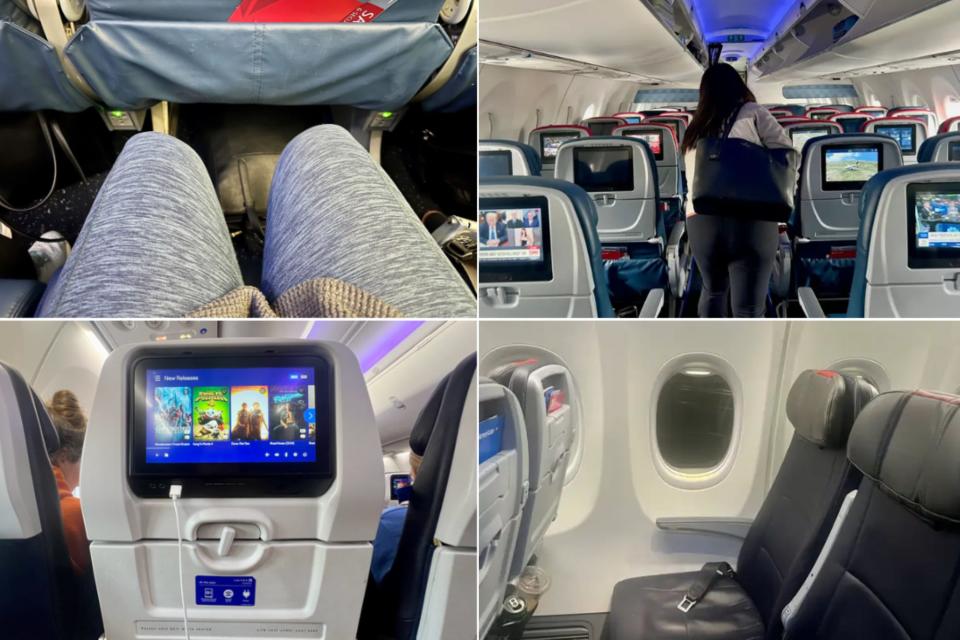
Most of the airlines' updated Airbus and Boeing narrowbodies have headrests, tray tables, seatback pockets, power ports, free snacks and drinks, and decent legroom and seat padding.
According to their websites, all three offer the standard 30-31 inches of pitch in regular coach, which is always plenty of space for my 5'3" self. Taller travelers may consider upgrading to an extra legroom seat, though.
I also had no customer service issues, with all of the airlines' airport agents and flight attendants being equally helpful and friendly. Granted, that's not always been the case in my years of flying, but bad apples exist at every airline, so I don't put much thought into that.
Delta has the best internet, but all of the Big 3 participate in a T-Mobile plan that gives free WiFi to eligible customers.
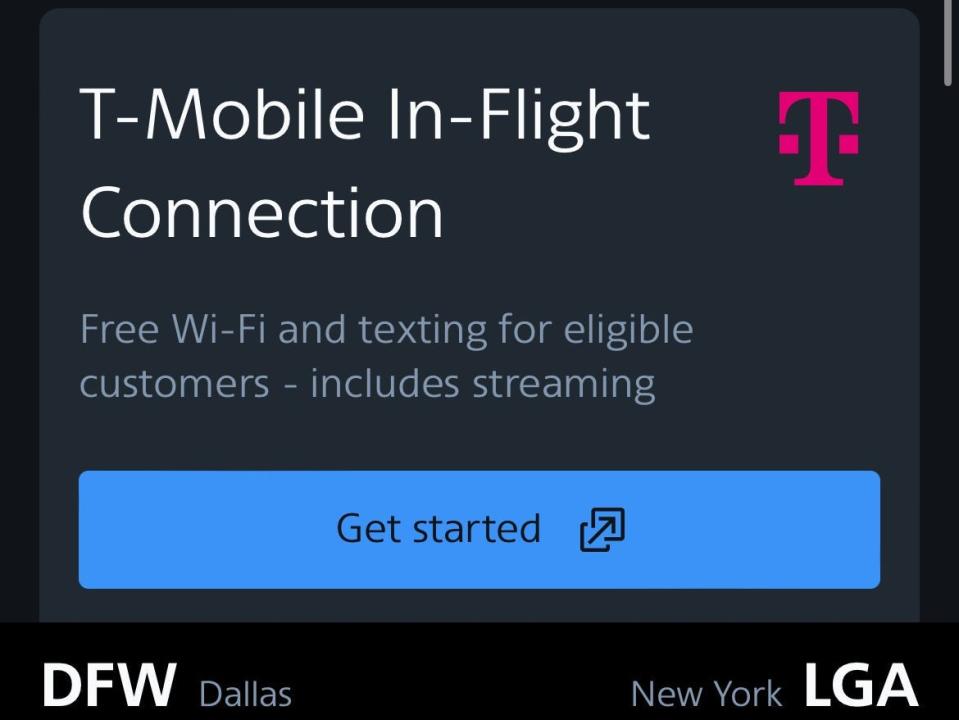
As a remote worker, I fly mainline airlines partly for the WiFi because I can access it fully free with my T-Mobile phone number. In my experience, the connection is mostly consistent across the board, and I could stream with no problem.
If you don't have T-Mobile, Delta is the best for internet as it continues to add unlimited free WiFi for loyalty members on its planes (you just need to make a free account).
American offers very limited free internet, while United offers complimentary messaging.
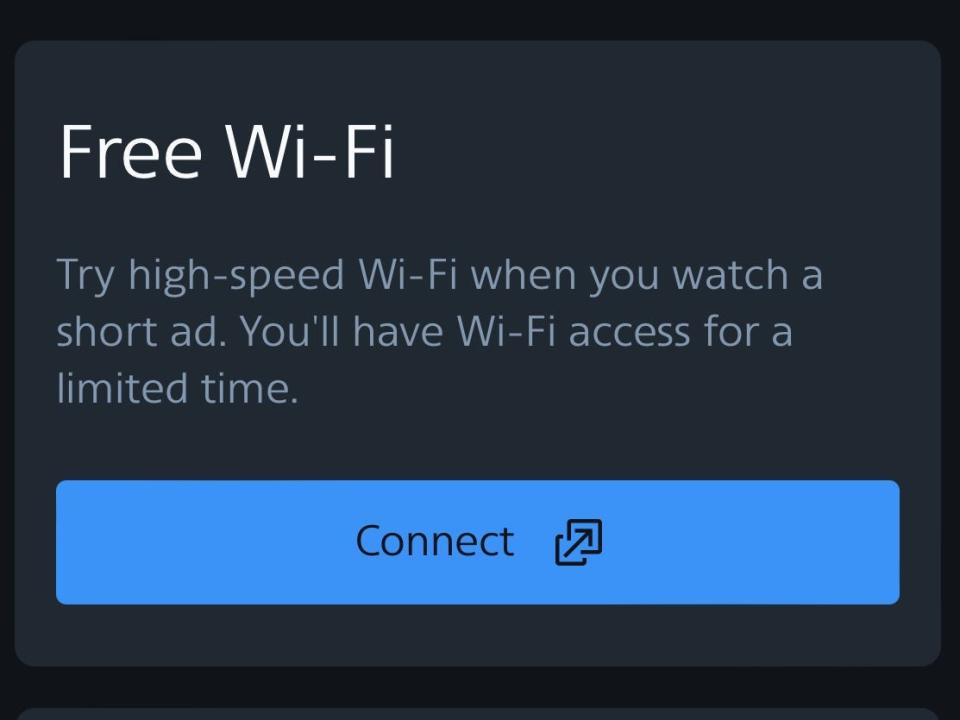
United's domestic WiFi costs $8 for MileagePlus members and $10 otherwise. Messaging is free and works on apps like iMessage and WhatsApp.
Meanwhile, American does offer ad-powered free internet, but my flight was limited to just 20 minutes.
American's strategy is likely to show people what the WiFi is like and entice them to buy a flight pass, but the up-to-$20 price for internet on my flight may be a little steep for some travelers.
Of course, there are some outliers, as all three still fly older jets that haven't been retrofitted with updated cabins.
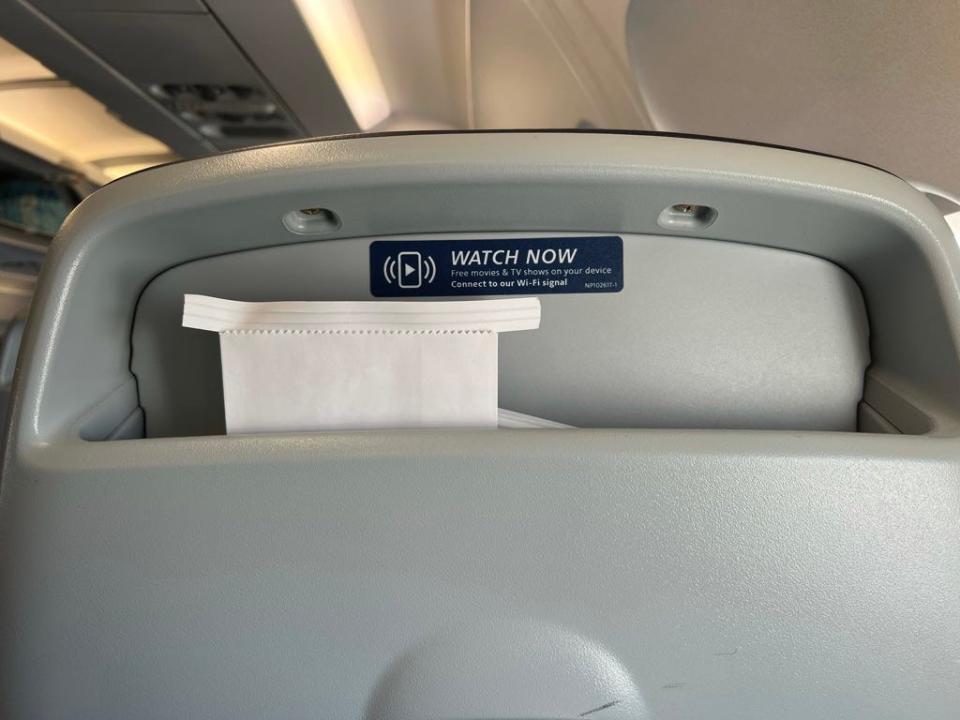
I specifically flew the updated cabins on American, Delta, and United's single-aisle Airbus and Boeing aircraft. However, all three still have some dated narrowbodies that don't offer all of the latest perks.
According to their respective websites, Delta's Boeing 717s lack seatback screens, as do many of United's 737-900s and 757-300s and select cabins on its Airbus planes (minus the A321neo). And you won't find power on all of American's Airbus narrowbodies.
While this will likely change as airlines continue to retrofit their fleets, I suggest you always check the airline's website outlining its fleet to see what you can expect before booking. The plane type will be displayed at booking and on your reservation.
Still, you'll more likely than not be on a retrofit plane with enough comforts to survive a four or so-hour flight.
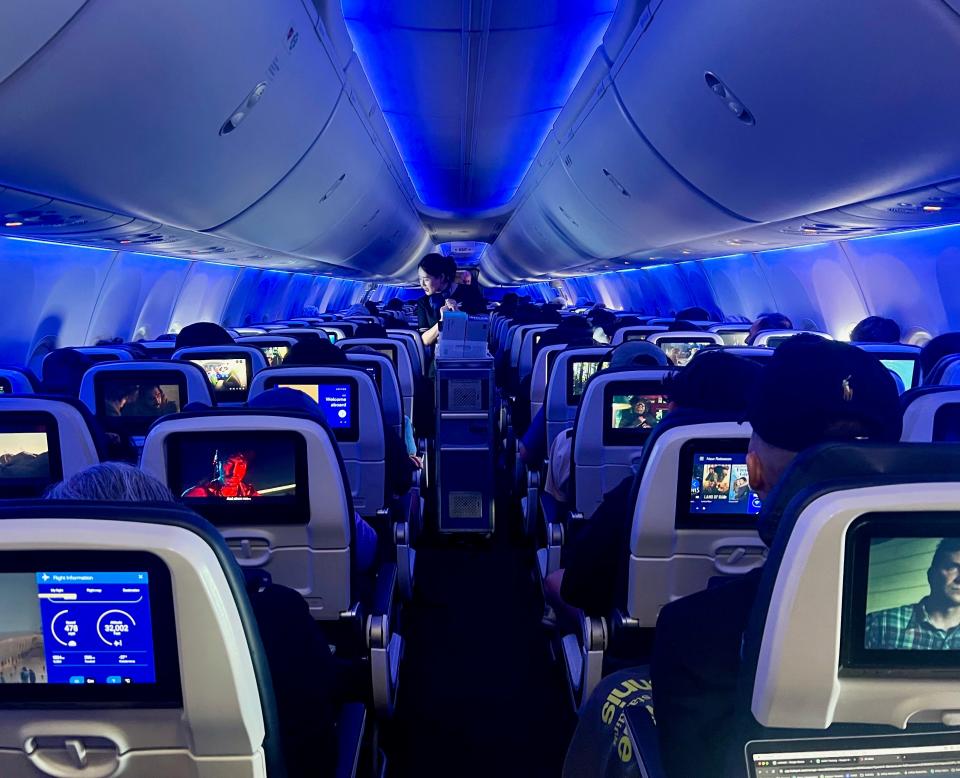
I got a headrest and a comfortable enough seat on all three airlines' planes despite getting stuck in the middle seat on each.
Plus, every flight was perfectly on time. In fact, all three scored an on-time rate of at least 80% in 2023 — Delta at about 84% and the other two both just over 80%. United got roughly the same rate as in 2022, with Delta and American both improving year over year.
According to global travel data provider OAG, that's considered good punctuality in the airline industry. But remember, delays and cancellations can happen to any airline at any time, so sometimes it is just luck.
And if you're on Delta's A220 plane, you may want to visit the lavatory.
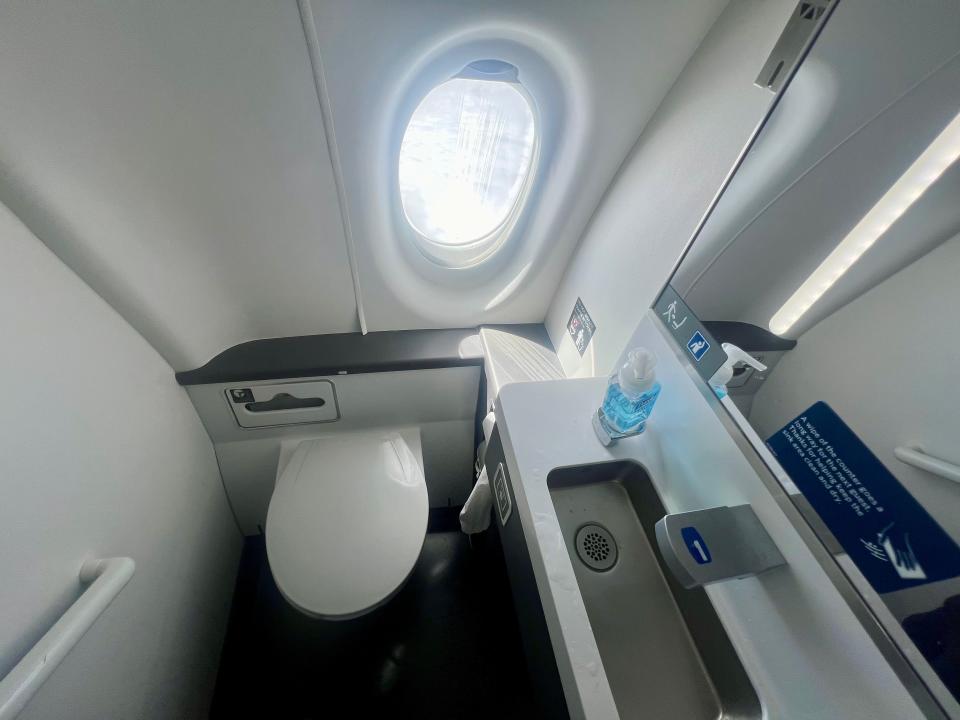
The aft lavatory on Delta's A220 fleet has a full-sized window. I'd consider it the best window seat onboard, and we aviation enthusiasts have dubbed it a "loo with a view."
You won't find the unique window on other US A220 carriers like low-cost airlines Breeze or JetBlue — though the latter has better legroom than any of the Big 3.
Overall, my recent flights gave me more confidence in American and United after previous mediocre experiences.
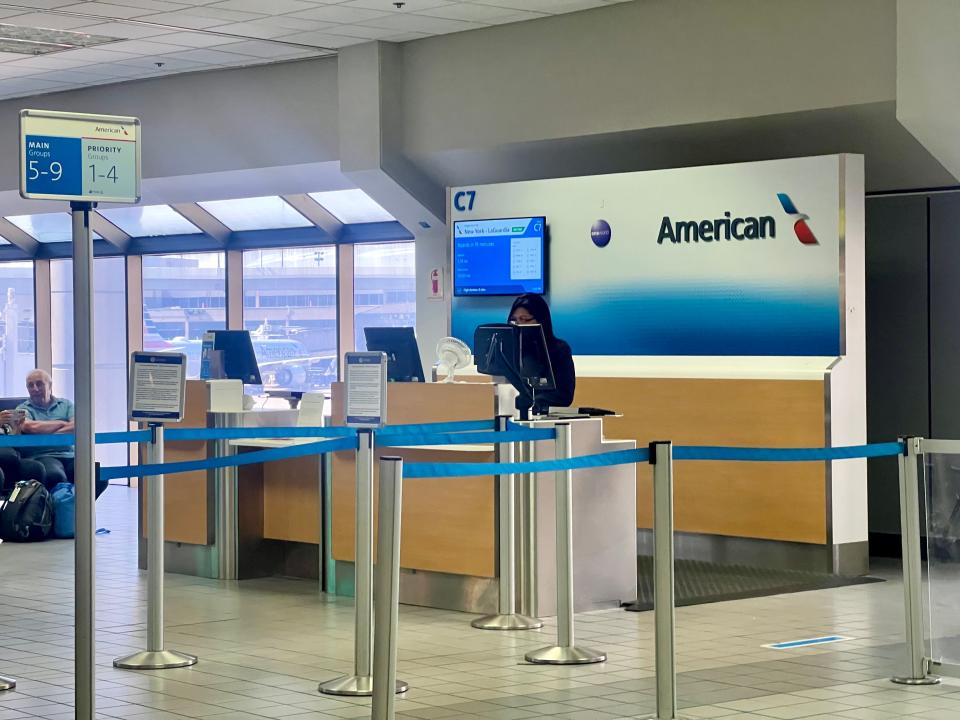
Delta consistently has the best on-time performance of the Big 3 year over year. It's, personally, rarely done me wrong. However, the other two have been hit-or-miss over the years, but customer-focused improvements are evidently working.
American has proven it isn't the inconsistent airline I used to avoid, while United's new domestic product is easily competitive but still lacks some freebies like the WiFi and carry-on offered by its rivals.
My main hesitation would be the route. I'll almost always pay more or go out of my way for a nonstop.
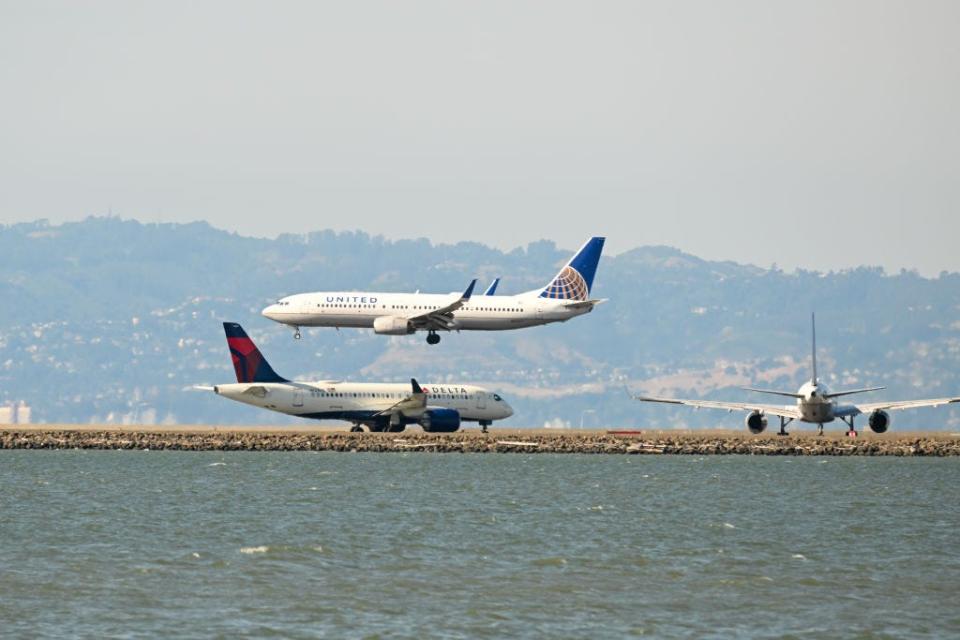
I live closest to New York-JFK and LaGuardia, so booking American and Delta for convenience, even if it costs more, makes sense since United has much fewer flight options at both NYC airports.
I'd also prefer not to travel all the way to United's Newark, New Jersey, hub for a flight. Again, it's case-by-case, but United's fare would need to be stupidly cheap.
And remember, we're talking domestic flights here. International is an entire other ballgame.
For those still stuck between one or more of the three for a particular economy flight, here's my best advice on how to choose.
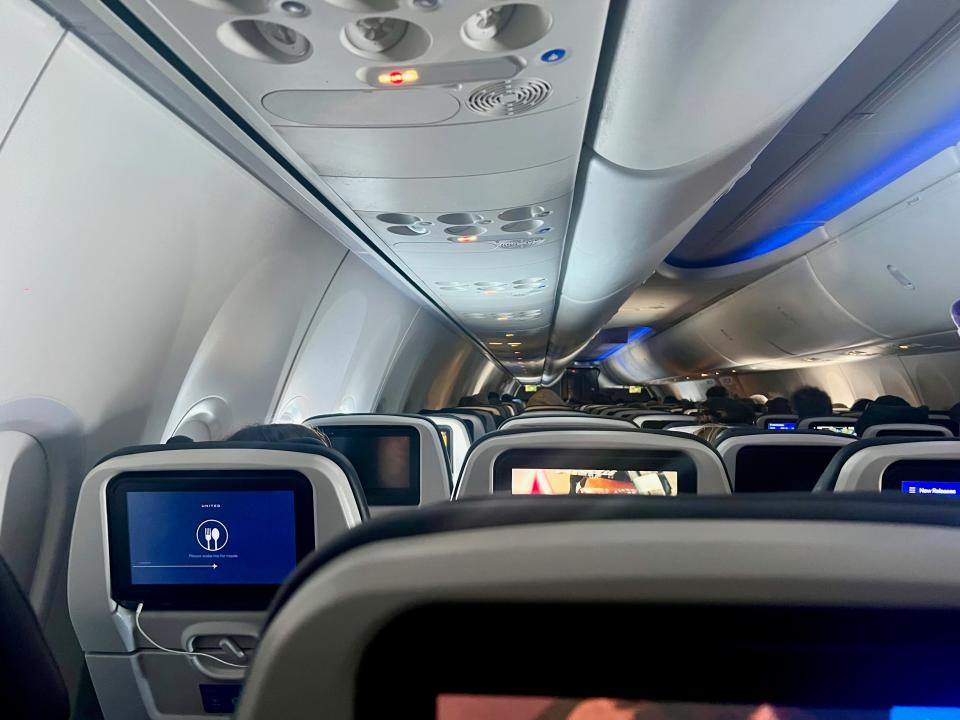
Firstly, if you care most about punctuality, the data says book Delta. Plus, the airline is consistently awarded for its premium-focused service and comfort, so it's just a safe bet — but you may see higher fares because of it.
United's upgraded cabin is just as nice as Delta's, and I'd argue it's actually better with the Bluetooth option. But you'll want to pay up for at least regular economy to get a carry-on for domestic flights.
While I've had my issues with American in the past, the airline has fully grown on me. It is often among the cheaper options, but most of its narrowbodies don't have a seatback screen.
You'll still get entertainment on American but on a handheld device. If you're like me, who watches content on a personal device, I'd say that's a win-win.
Read the original article on Business Insider

